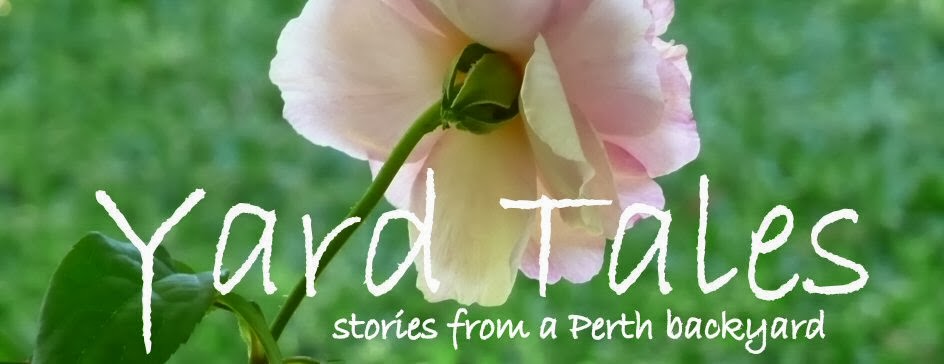I
have 14 David Austin Sharifa Asma roses, so let me tell you just why I like
them so much.
Firstly,
because they are so stunningly perfumed. I started by buying two bare-root
standards. I may have lucked out, but these two are amazingly fragrant, with a
smell that is almost oily. You can imagine droplets hanging in the air.

Second,
because they are upright and bushy, unlike some of the other David Austin roses
which can be quite rounded and spreading. Sharifa Asma has more the upright
growth of a hybrid tea, maybe even narrower and about 4 to 5 feet tall. They fit just perfectly into a
relatively narrow space.
I
was so impressed with the fragrance of the standards that I decided to make a
hedge of them. I headed off to Melville Rose Nursery late one winter and picked
myself up 6 Sharifa Asmas (I’ve since extended the hedge). Three are very
fragrant, two aren’t at all and one was mislabelled and I think might possibly be
a Glamis Castle (pictured below). Any other ideas as to its identity would be
welcomed. It fades to white with age.
Which
proves one thing, that fragrance in roses varies from plant to plant not just
variety to variety. Nowadays I try and pick them up during flowering season so
I can pick out the most fragrant ones.
And
thirdly, because they are very heat and sun tolerant and do really well in
Perth summers, flowering often and generously.
If
they have a fault, at least in my eyes, it is in leaf form, kind of wrinkly.
Apparently it is a rugosa style leaf (so the literature says). I’m not that
fond of it but I find I don’t focus on it in the landscape.
Highly
recommended!






















